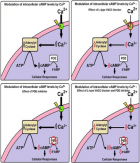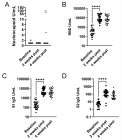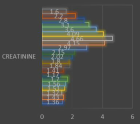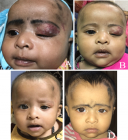About Security Forces Hospital
Security Forces Hospital
Articles by Security Forces Hospital
Screening of Gestational diabetes mellitus
Published on: 4th April, 2018
OCLC Number/Unique Identifier: 7586666202
Gestational diabetes mellitus is becoming a very common medical disorder associated with pregnancy especially so in the Middle East and more so in Saudi Arabia, thus putting the women and fetuses at an increased risk of maternal and neonatal morbidity and mortality.
Screening for Gestational diabetes mellitus was recommended because of its asymptomatic nature and good proportion of patients with no classic risk factors. We recommended universal screening because of the beneficial effect of screening, diagnosis and subsequent treatment.
The most recent study done in Security Forces Hospital showed a significant decrease in morbidity and mortality with application of the new values of screening, in spite of the increase of incidence of Gestational diabetes mellitus from 14.5 % in 2005 study, to 23.9 % in the recent study in 2015.
Objectives: To highlight and determine the best screening method values of FBS and 2hrspp used to diagnose gestational diabetes mellitus.
Maternal & neonatal out come and associated risks for patients who had Gestational diabetes mellitus, where scrutinized.
The study was done in the period from June 1st 2013-31 of May 2014.
Design: Retrospective cohort study.
Setting: Tertiary centre (Security Forces hospital _Riyadh_Saudi Arabia).
Patients: Out of 6849 patients who had their delivery in Security Forces Hospital between June 2013 and May 2014 (one year), 6340 patients (92.5 %) were screened for gestational diabetes mellitus, and out of these 1516 patients (23.9 %) were labeled as Gestational diabetes mellitus after exclusion of cases of IDDM and NIDDM.
Main outcome measured: The purpose of this study is to advise on using new values for diagnosis of gestational diabetes and to assess the outcome of pregnancy after new values are implemented in security forces hospital for diagnosis. The outcome included ages of mothers, parities, number of abortions, associated medical disorders, and estimated blood loss. Control methods were also reviewed, gestational age of induction of labor. Associated intrapartum complications as well as fetal outcome were also reviewed. The weight of babies, congenital abnormalities, admission to neonatal intensive care unit were also studied. The different values used , and percentages of diagnosed values of last 3 studies done in Security Forces Hospital in comparison to the most recent study with new values(2014-2015) as shown in table 11.
Results: The incidence of gestational diabetes mellitus increased from 14.5 % in the year 2003 - 2004 to reach 23.9 % in 2014, in the same institute (Security Forces Hospital), where the study was done using different values. In our study in Security Forces Hospital we recorded a significant decrease in morbidity and mortality on applying the new values.
A significant reduction in the number of expired babies of mothers who were diagnosed as gestational diabetes with new values with a decrease from 5.6 % in previous years studied to reach 1.5 % in 2014, reflecting the effective control and the good catch for the new values.
Conclusion: Universal screening, with whatever values to blood sugar used, is a better method screening than the selective one: Using 75 gram of Oral Glucose Tolerance Test proved to be cost effective, easily accessible, and with good pickup rate of up to 93 % of patients in Security Forces Hospital.
Recommendations: To continue using the new values that will be universally implemented, with long term follow-up of mothers and newborn.
Maternal and fetal outcome of comparative study between old & adopted new value of screening of Gestational Diabetes Mellitus in tertiary centre in Saudi Arabia
Published on: 18th May, 2018
OCLC Number/Unique Identifier: 7671832754
Objectives: To check if there is any significant difference in the immediate outcome of pregnancy with diabetes using the new values of FBS & 2hrs post prandial with 75g OGTT for 1 year (from 1st June 2013-31st May 2014) in comparison to the previous data done in the same institute with other values and with international figures.
The data in our study included fetal, maternal morbidities, intra partum and postnatal outcomes, in order to help, if possible, on deciding the best values to use for screening for gestational diabetes mellitus. Furthermore, to know the new percentages of gestational diabetes mellitus in SFH by utilizing the new values of Blood Sugar readings.
Design: Retrospective cohort study
Setting: Security Forces Hospital-Riyadh-Saudi Arabia
Patients: Done (from 1st June 2013 – 31st May 2014), on patients who had attended Security Forces Hospital, Riyadh, Saudi Arabia. This chosen year’s data was compared with data collected in the three previous years using different figures.
Main Outcome measured: Average age of mother, maternal aspects of parity, history of GDM, number of abortions``````````````````````````````, estimated blood loss in labor, associated medical disorder, complications of previous pregnancies, methods of control of GDM, gestational age for IOL and associated intrapartum complications. Immediate neonatal outcome in cases of GDM, comparison of birth weights of babies & any specific congenital abnormalities and delayed causes of admission to NICU in the 4 years studied were also reviewed.
Results: The percentage of diagnosed cases of gestational diabetes mellitus (GDM) after screening was 24 % as compared with 14.5% in previous study of 2003-2004 & with the number of screened patients amounting to 93% out of the total number of deliveries between 2013-2014 (in both years universal method of screening was used). The multidisciplinary set up of our GDM specialized clinic which was composed of dieticians, diabetic educators, endocrinologists and obstetric physicians operating together, helped to reduced the use of insulin in combination with diet to only 24% in comparison to 76% of patient using diet and exercise alone. The study showed a mean age of 33years and weight of 77kg. It was also noted that 16% of the patients diagnosed with GDM were multiparous averaging 1-5 deliveries. Almost 62% of patient didn’t give any history of GDM and no history of previous medical diseases. The majority of the patient with GDM delivered without complications during labor, with 30% having vaginal lacerations & 73% of patient had an estimated blood loss of less than 500cc. NICU admissions secondary to hyperbilirubinaemia averaged almost 17% in comparison to previous studies and only one baby expired in a GDM patient. Our study revealed a good fetal and maternal out come with less delivery complications and less incidence of postpartum hemorrhage (5.7%).
Conclusion: It is concluded that Universal Screening of Pregnant women whether with previously used glucose value or new ones for gestational diabetes mellitus is a better option, which has proven to improve both maternal and fetal outcomes. The 75 OGTT test is a cost effective test and with both easy accessibility and good screening pick up number (92.5%) of the patients in Security Forces Hospital, Riyadh.
Recommendation: We recommend annual follow up for patients, both the mother and the baby after postpartum, to prevent the development of type 2 diabetes.
Perinatal Morbidity & Mortality following repeat Cesarean section due to five or more previous Cesarean Section done in Tertiary centre in KSA
Published on: 31st July, 2018
OCLC Number/Unique Identifier: 7815122185
Objectives: To highlight and determine the maternal and neonatal outcome and associated risks for patients who have undergone their 6th and more caesarean sections.
Design: Case control study.
Setting: Tertiary Centre (Security Forces Hospital – Riyadh – Saudi Arabia).
Patients: 80 patients selected to study group who have undergone their sixth and more caesarean sections in Security Forces Hospital. Between June 2006 and May 2010. This group was compared to 80 patients who have undergone their third to fifth caesarean sections during the same time period and immediately following the studied case.
Main outcome measured: Age and parity of women in study and the control group were correlated with the number of previous caesarean sections. Intra operative and post-operative maternal complications including presence and grade of adhesions, intra partum and postpartum hemorrhage, use of measurement and methods (both medical and surgical) to control bleeding such as Bakry balloon, Internal iliac artery ligation, etc., were highlighted. Bowel injury, blood transfusion, admission to surgical intensive care, incidence of placenta previa and accreta, post-operative complications like paralytic ileus, wound infection were also noted. Further, neonatal outcome including birth weight, Apgar score, and need for neonatal intensive care unit admission were reviewed.
Results: Patients in the study group had higher incidence of extensive adhesions (41.25%) compared to (12.25%) in the control group. Bowel injury was (2.5%) in study group with none in the control group. The incidence of placenta previa was (8.75%) in the study group as compared to (2.5%) in the control group, with placenta accreta complicating (28.57%) of placenta previa seen only in the study group. Blood transfusion was higher in the study group (20%) as compared to (5%) in the control group.
Neonatal admission to NICU was higher in the study group (27.5%) in comparison to the control group (12.5%). Also birth weight was lower in the study group.
Conclusion: The more the number of caesarean sections, the more the maternal and neonatal morbidity.
Patients should have proper counselling during antenatal follow up about the risks of repeated caesarean sections, and offered bilateral tubal ligation after the third or fourth caesarean sections.
Experience with trans radial uterine artery embolisation for uterine fibroids in a tertiary center in Saudi Arabia
Published on: 1st December, 2020
OCLC Number/Unique Identifier: 8812313094
Trans-radial uterine artery embolization (UAE) is acknowledged as a non- invasive, cost-effective and safe procedure for the treatment of symptomatic fibroids. However, it is associated with the recurrence of symptoms like abnormal uterine bleeding and pressure symptom in some patients. This is a comparative study of our data with other international data, in the context of percentage reduction in fibroid size, accompanying controlling factors, short and long term follow up data analysis of the first two years was done. Careful pre-procedural counseling of future possibility of fibroid recurrence and means of management should be stressed.
Materials and methods: A retrospective cohort study at the Security Forces Hospital in Riyadh, Saudi Arabia, was conducted. The study was done from 1st November 2017-31st October 2019, on symptomatic patients diagnosed with fibroids, who refused surgical treatment.
The outcomes included: fibroid site, size and anatomical position, patients’ symptoms, general condition, and early and delayed complications. These data were compared with those from other international studies.
Results: The study involved 23 patients (mean age: 39 years). The average percentage reduction in fibroid volume was 49%. There were no major complications and no recurrence of symptoms during the covered period. Data analysis revealed a poor correlation between the overall percentage reduction of fibroid size with fibroid number, age of patients’, and body mass indices.
Conclusion: Despite poor correlation, we provided preliminary data of the first two years out of the total five-year projected period of the study where it showed effectiveness and relative safety of radial - UAE for fibroid.

If you are already a member of our network and need to keep track of any developments regarding a question you have already submitted, click "take me to my Query."

















































































































































